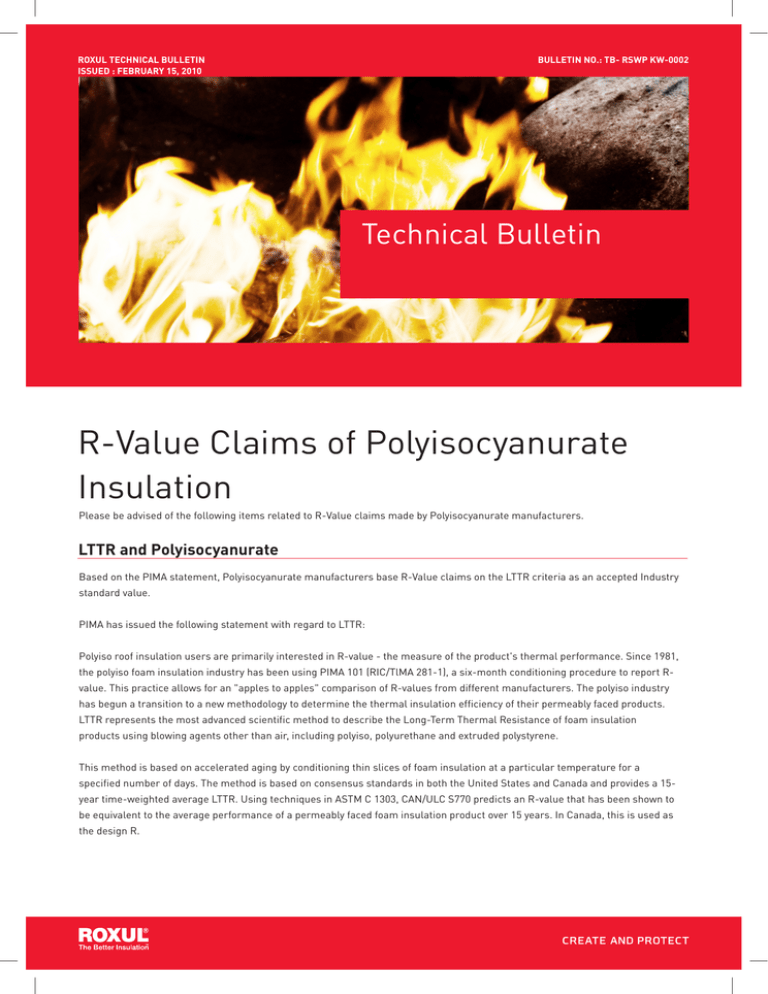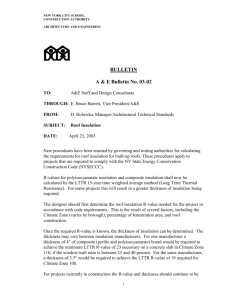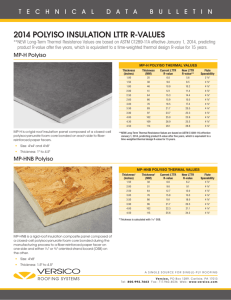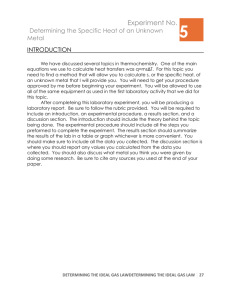R-Value Claims of Polyisocyanurate Insulation
advertisement

ROXUL TECHNICAL BULLETIN ISSUED : FEBRUARY 15, 2010 BULLETIN NO.: TB- RSWP KW-0002 Technical Bulletin R-Value Claims of Polyisocyanurate Insulation Please be advised of the following items related to R-Value claims made by Polyisocyanurate manufacturers. LTTR and Polyisocyanurate Based on the PIMA statement, Polyisocyanurate manufacturers base R-Value claims on the LTTR criteria as an accepted Industry standard value. PIMA has issued the following statement with regard to LTTR: Polyiso roof insulation users are primarily interested in R-value - the measure of the product's thermal performance. Since 1981, the polyiso foam insulation industry has been using PIMA 101 (RIC/TlMA 281-1), a six-month conditioning procedure to report Rvalue. This practice allows for an "apples to apples" comparison of R-values from different manufacturers. The polyiso industry has begun a transition to a new methodology to determine the thermal insulation efficiency of their permeably faced products. LTTR represents the most advanced scientific method to describe the Long-Term Thermal Resistance of foam insulation products using blowing agents other than air, including polyiso, polyurethane and extruded polystyrene. This method is based on accelerated aging by conditioning thin slices of foam insulation at a particular temperature for a specified number of days. The method is based on consensus standards in both the United States and Canada and provides a 15year time-weighted average LTTR. Using techniques in ASTM C 1303, CAN/ULC S770 predicts an R-value that has been shown to be equivalent to the average performance of a permeably faced foam insulation product over 15 years. In Canada, this is used as the design R. NRCA and LTTR NRCA recommends an R-value of 5.6 per inch (25 mm) thickness be used to calculate the total thermal resistance of polyisocyanurate foam board roof insulation. This 5.6 R-value is based upon an in-service R-value. Most manufacturers' currently published literature provides for R-value data for polyisocyanurate foam board roof insulation based upon the long-term thermal resistance (LTTR) method of determination. The LTTR method provides for reporting of R-value based upon a calculated 15-year time-weighted average. At this time, NRCA does not endorse or recommend the use of the LTTR method for determining the thermal resistance of Polyisocyanurate foam board roof insulation. R-Value vs. Guarantee Claims There are many manufacturers of polyisocyanurate insulation, each making their own claims in their guarantees. In some cases the R-value may not be guaranteed for the period of time assumed by the designer or owner and may only be guaranteed for a very short period of time. Any energy savings calculations or life cycle analysis should take the manufacturers guarantees into consideration. Guarantees often reflect the real world experience of the manufacturer. FOR PROFESSIONAL USE ONLY




